Unit 2 英语1 (基础模块)第二版
中专英语1(基础模块)unit2
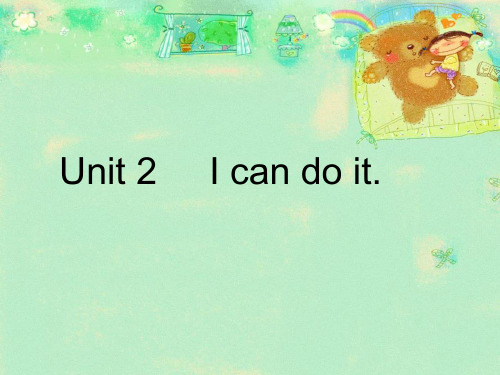
Listening and speaking
3. Listening and Speaking
( ) a. I can drive a car. ( ) b. I can swim. ( ) c. I can use the computer. ( ) d. I can play basketball. ( ) e. I can serve visitors. [‘vɪzɪtə(r)] (为游客服务) ( ) f. I can speak English.
这些方法适用于英语学习。
Language in use (Grammar focus)
Can 的练习题
二、把下列句子变为否定句。
• 1、Lingling ccaan’t ride a horse. • 2、He ccaann’t speak Chinese. • 3、Lingling and Daming ccana’nt play the
apply的用法搭配
2. apply to 适用(运用)于 如: 1)The book does not apply to beginners.
这书不适合于初学者。
注:该结构中的 to 为介词,若后接动词,要用动名词。 如:These methods apply to learning English.
2) He didn’t use his ink. He used mine.
他没有用他自己的墨水,他用了我的。
3) That book is hers, not yours. 那本书是她的,不是你的。
重点词汇和句型
三、反身代词表示“我自己”、“你自己”、“他自己”、“我们自己”、
“你们自己“”他们自己“等代词, 也称”自身代词“。反称代词有人
《英语1》(基础模块高教版)教案:第二单元第四课时(中职教育).docx

Unit 2 I can do it!(第四课时教学设计)一、教材分析1.教学内容本课时系教材《英语1》(基础模块高教版)第二单元的笫四课时,包括vocabulary consolidation, pronunciation practice & unit task.具体内容为:能力描述,词汇归类,对耒来的职业设想,6个音标,以及单元小结。
2.教学重点、难点⑴教学重点能力描述,词汇归类,职业设想,6个音标⑵教学难点能力描述,音标二、教学目标1.知识目标⑴词汇按三人主题归类:job, animal, personal information⑵动物和职业能力描述,如A teacher can speak English/use the computer/read and write/swim/run.A fish can swim.(3)想像未來的职业与能力,并填写求职表(4)掌握六个音标的正确发音2.能力目标⑴学牛能归纳词汇,并养成按主题记忆词汇的好习惯。
⑵学牛能畅想自己的未來,并为之付出不懈努力。
(3)学生能大声说英语,不怕出错。
3.情感目标学生能正确评价口我,合理规划口己的人生,并对口己的单元所学做出理性评价。
三、教学步月Step One Lead-in (10m)1.The teacher makes a comment on the students5 homework. Read aloud some good writing aboutself-introduction.. The teacher may also type these good articles and ask each group to read these articles loudly.(设计意图:教师对学生的作业进行及时反馈,在全班面前朗读优秀文章,既鼓舞了被选中者,也能激励更多学生用心写作。
同时,这也是教师展示个人基本功的良好时机,教师应有表情地朗读这些文章,达到言传身教的目的。
英语1(基础模块)第2版 unit 2 知识点及练习

英语1(基础模块)知识点及练习Unit Two I can do it !一、词汇(一) speak, say, tell, talk几个词的区别1.speak (1)后面直接跟语言名词,例如:speak Chinese/ English(2)表示说话的能力。
e.g. The baby can‟t speak.(3)speak可用于打电话时句型May I speak to sb. 请找xx 接电话好吗?e.g. ——Hello! This is Tom. May I speak to Mary? 请找玛丽接电话好吗?——Speaking .我就是,请讲。
2.tell, 告诉, 讲,分辨(1)告诉。
常有以下四个短语:告诉某人某事tell sb. sth . 给某人讲… 用tell sb. sth= tell sth to sb.e.g. 1.Can you tell me your phone number?2.Can you tell me the way to the post office?告诉某人要做某事tell sb. to do sth.告诉某人不要做某事tell sb. not to do sth告诉某人关于某事tell sb. about sth.(2 )讲。
后接故事、笑话、谎言。
e.g. 1.Jack likes telling stories. 2.He often tells us interesting stories.3,She often tell lies .(3 ) 分辨Can you tell the differences between the two books.3.say 说(1)后面接具体内容,有引号,想表达某个人说什么具体事情的时候用say(2) 你会用某种语言说某物吗?Can you say sth in English? / in Chinese?(3)对某人说:say to sb sthMy father often says to me “Be careful when crossing roads(过马路时)4.talk 动词:谈;名词:报告,讲座(1)谈论…,有词组talk about e.g. They are talking about the weather.(2)谈话交谈。
英语基础模块第二版第二册Unit_1

7. Look and talk.
Harbin
cold / went skating / terrible
A: Where did you go? B: A: What was the weather like? B: A: What did you do there? B: A: Did you enjoy yourselves? B:
Yours, Bob
10. Read and tick.
Dear Family Life,
My mother is a typical housewife and she does nearly all the housework.
My father is an engineer and he never does any family chores.
11. Read and tick.
Bob’s mother ● went out for her daily run ● went shopping ● slipped and hit her head
Ben’s father
□ □ ● went to the supermarket □ □ ● counted what he bought □ □ ● cooked for Ben’s mother
10. Read and tick.
Dear Family Life, My mother is a career woman, but she never forgets her household
duties. One snowy morning, she went out for her daily run. When she returned
《英语》(基础模块)(修订版)第二册第二单元

外研版基础模块(修订版)第二册
Unit 2 What an amazing place!
一、单元整体解读及分析
二、分课时教学设计
第一课时
第二课时
第三课时
第四课时
作者简介:陈晓峄,佛山市南海信息技术学校教师,扎根中职英语教学,用乐观的人生态度,严谨的工作态度赢得了师生的好评,不断努力,不断学习,磨砺自己,在完成了华南师范大学教育硕士的学习后继续探索。
其所著的论文,所做课件,网页均获得过全国、省、市、校各级奖项。
曾获第一届“外研社杯”全国中职英语教师教学技能大赛一等奖。
(完整版)英语1(基础模块)第2版-unit-2-知识点及练习,推荐文档.docx
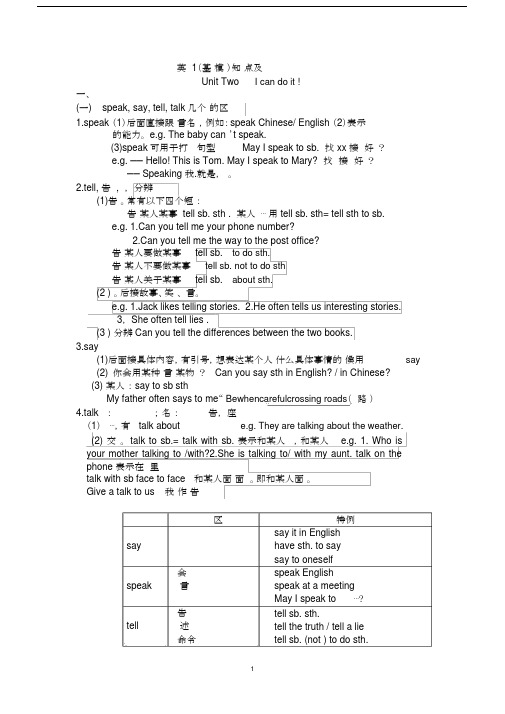
英 1(基模)知点及Unit Two I can do it !一、(一) speak, say, tell, talk几个的区1.speak (1)后面直接跟言名,例如:speak Chinese/ English (2)表示的能力。
e.g. The baby can ’t speak.(3)speak可用于打句型May I speak to sb. 找 xx 接好?e.g. —— Hello! This is Tom. May I speak to Mary? 找接好?—— Speaking 我.就是,。
2.tell, 告 , ,分辨(1)告。
常有以下四个短:告某人某事 tell sb. sth . 某人⋯用 tell sb. sth= tell sth to sb.e.g. 1.Can you tell me your phone number?2.Can you tell me the way to the post office?告某人要做某事tell sb.to do sth.告某人不要做某事tell sb. not to do sth告某人关于某事tell sb.about sth.(2 )。
后接故事、笑、言。
e.g. 1.Jack likes telling stories. 2.He often tells us interesting stories.3, She often tell lies .(3 ) 分辨 Can you tell the differences between the two books.3.say(1)后面接具体内容,有引号,想表达某个人什么具体事情的候用say(2)你会用某种言某物? Can you say sth in English? / in Chinese?(3)某人: say to sb sthMy father often says to me“ Bewhencarefulcrossing roads(路)4.talk :;名:告,座(1)⋯,有 talk about e.g. They are talking about the weather.(2) 交。
高教版2021 中职英语 基础模块二Unit 1 Travel grammar
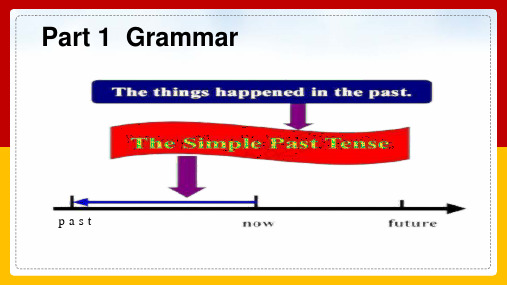
2)The clock said four minutes past eleven when we __s_et_o_f_f___for London. 3)There are _a_l_l_s_o_rt_s_o_f____rooms in this hotel.
4)When things aren’t going well,my father encourages me,telling me not to
Notes of Xu Xiake.
become
3)Xu became interested in books about different places at an early age and wanted to
travel.become
spend
set
4)Marco Polo spent 24 years traveling and he set out his first trip at 17.
__g_iv_e__u_p__.
5)The coast road is now closed__d_u_e__to____bad weather.
Vo c a b u l a r y
Task19 Read and complete 阅读一篇有关徐霞客的短文,用所给单词适当形式填空。
(完整版)英语1(基础模块)第2版unit1知识点及练习,推荐文档

英语1(基础模块)第2版知识点及练习Unit One Nice to meet you !一、词汇(一),firstnum.第一(基数词one的序数词) ; n.第一,最初; 头等;adv.最初; 首先; at firstadj.第一流的; 最初的,最早的; 基本的;(二),lastn.末尾; 最后; 上个; vt. 经受住; 够用; 足够维持; vi.持续;adj.最近的; 最后的; 最不可能的; 惟一剩下的;adv.上一次,最近一次; 最后; at last(三),Mr. 先生,与Sir先生; Mrs. [misiz] 女士(已婚)Miss 小姐(未婚) Ms. [miz] 女士(婚姻状况不明)Madam 夫人,太太,小姐1. Mr. 意为"先生",Mr. 是Mister (先生)或Master (主人)的缩写。
一般用于男子姓氏或职务前;不管年龄大小;辈分长幼;职务高低;结婚与否,男子都可称为Mr.;后面跟姓。
如果一个男子的职务是校长,就可以称他为Mr.Headmaster (校长先生);Sir :对不相识的男子或上级;长辈或从事某种职务的男子表示尊称时,英;美人通常用sir,意为"先生;阁下;长官",后面不跟姓氏;如:—May I go now,sir?(先生,我可以走了吗?)—Yes,sir.(可以,先生;) sir还广泛用于各类信件中,如:Dear sir,Dear sirs;2. Mrs.意为"夫人,太太",是Mistress 的缩写。
常用于已婚妇女的丈夫的姓氏前;如果一个名叫Mary Jones的女子嫁给了一个名叫Jack White的男子,就称她为Mrs. White,但不能称Mrs. Jones;Mrs. Smith lives in Paris. 史密斯太太住在巴黎。
3. Miss意为"小姐",复数形式为Misses,用于对未婚女子的称呼;如果一个未婚女子名叫Rose Jones,可以称她为Miss Jones。
高教版中职英语(基础模块-第1册)Unit-2《I-can-do-it》ppt课件1全

□ family
□ parents
Activity 13
Read and circle. 阅读求职表,圈出申请表中包含 的要素。
name
phone number
age ability
e-
mail address
Unit task
application 2CCCCCC) CCCCCCCCCCCNow complete your application form in 2015. form
b. Name Sally Smith Age 25
Address No. 4 Hexi Street, Tianjin
Position applied Sales Manager
Abilities I can use the computer. I can drive a car. I can write in English and French. …
Choose and guess. 各自选出下面的一种职业,通过与同伴 问答猜出对方的职业。
eg Group members: Can you …? You: Yes, … / No, …
( ) ask for personal information.
( ) fill in an application form. ( ) use “can”. ( ) talk about abilities.
I you Yes, he / she / it can. we you they
I
you
he / she / it
Can
we
…?
you
they
I
you
No,
中职英语基础模块1第2版Unit Test (Unit 2)测试题Unit 2
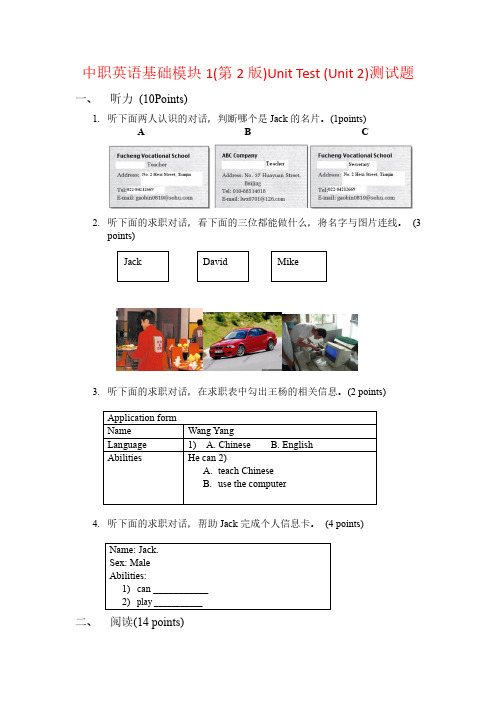
中职英语基础模块1(第2版)Unit Test (Unit 2)测试题一、听力(10Points)1.听下面两人认识的对话,判断哪个是Jack的名片。
(1points)A BC2.听下面的求职对话,看下面的三位都能做什么,将名字与图片连线。
(3points)3.听下面的求职对话,在求职表中勾出王杨的相关信息。
(2 points)4.听下面的求职对话,帮助Jack完成个人信息卡。
(4 points)二、阅读(14 points)1.假设你是经理,阅读Jane的求职表,判断她能胜任哪份工作。
(4 points)A. B.2.A. B. C.3.阅读下面的四份求职表,完成下面的判断,把名字写在相应的空格内.(41)________ can join the basketball club.2)________ can join the teachers’ club.3)________ can join the IT club.4)________ can join the waiters’ club.4.下面是王扬的一些个人信息,请把这些信息放入求职表适当的位置(只填写字母即可),帮助他完成求职表。
(4points)A. Wangyang,B. 20C. 1234449999,D. ****************,E. He can speak English. He can drive cars.三、语言应用(18 points)1.阅读下面的对话,选择适当的选项补全对话使其完整。
(6 points)A.I’d like toB. say somethingC. application formD. Can youE. teach EnglishF. positionDialogue AA: Good morning. What 1)___________ do you apply for?B: A waiter.A: 2)_________ you speak Chinese?B: Yes, I can.A: Good. Fill in this 3)_________ please.Dialogue BA: Welcome to our club. Can you 4______ about yourself?B. Yes. I can 5)________.A: You want to be a teacher?B: Yes. 6)________ your club and teach English.2.下面是丁丁的个人信息,请参照图片帮助她完成她的求职表. (8 points)Ding Ding, 26,010-***********************can:3.模仿下面的海报,根据提示帮助用人单位完成招聘海报信息。
《英语》(基础模块)第二册(外语与教研出版社)教案unit1,3

修正。
2)播放录音。在教师的指导下完成Reading and Writing○4。
3)教师PPT提供重点词汇:ask about age, ask about job, ask about weight, ask about salary, not formal, say“hi”, say“so long”, say“see you again”, look into
复习导入新课
1)讲评书面作业,及时表扬学生。
2)以抽签的形式,检查口头作业。
阅读
Pre-reading:
1)处理单词:
a.用图片和英文解释介绍westerner, formal, so long, shake hands with, weight, praise.
b.用英文解释chance.
c.播放单词录音。
Have a chance to
课堂小结
Summary
not as … used to
So long follow some basic rules
Shake hands with somebody such as
Be the first to look into one’s eyes
Have a chance to
教学难点
掌握skimming(略读)策略
教学方法
任务教学法
辅助教具
多媒体、网络资源视频、图片、教材
教
学
过
程
组织
教学
教师问候
复习导入新课
1)讲评书面作业,及时表扬学生。
2)以抽签的形式,检查口头作业。
阅读
Pre-reading:
1)处理单词:
外研社-英语(基础模块)(第一册)Unit2课件

Listen to the dialogue again.
Tom: Hi, Helen. Long time no see. Helen: Yes. How’s everything?
Tom: I’m fine. What about you? Helen: Not bad. What do you do now?
Today we are going to:
“Talk about your future job”
Brainstorming
P24① occLiustepn aandtmioatcnh s
bus driver cook nurse technician
n. 巴士司机 n. 厨师 n. 护士
secretary shop assistant
谢谢大家!
ook
P30① Exercises2
Describe jobs
1. A secretary
A. cuts hair for people.
2. A nurse
B. sells things in a shop.
3. A hairdresser 4. A shop assistant
C. looks after sick people. D. works in an office.
外研社-英语(基础模 块)(第一册)Unit2课件
UNIT 2
What Do You Do?
1. What did you want to be when you were a child? I wanted to be a ________ when I was a child. 2. What do you want to be now? Are you ready? I want to be a ______.
《英语1(基础模块)》电子教案(教学设计)Unit 2

Unit 2 I can do it!(第一课时)学情分析本单元是教材的第二单元,关于个人能力描述,要求能进行口头能力描述,向别人了解能力,能看懂求职表,根据求职表安排合适的工作岗位,填写求职表等,实用性强,内容贴近学生生活,新的词汇量不大,句型简单。
职业学校的学生通常会说却不能正确拼写单词,会七嘴八舌地说出许多词组,但是不能长段地独立表达个人观点,课堂热闹但是课后较少主动复习,因此,教学中应重视基本词汇的四会,重视指导性作文的写作,重视指导学生养成课堂记笔记的能力。
职业学校的学生普遍发散性思维较强,教师可以充分利用集体的力量开展教学,集思广益。
一、教材分析1. 教学内容本课时系教材《英语1 (基础模块) 》第二单元的第一课时,包括Lead-in, Listening and speaking中的Dialogue A两部分,具体内容为:描述个人能力的词汇、询问和谈论能力的语句。
这些内容为整个单元的学习活动做语言和知识的准备,也为学生用英语流利表达个人能力提供了模板,还利于教师挖掘学生的多元智能,促进学生间进一步了解。
2. 教学重点、难点1) 教学重点通过与个人能力描述相关的词汇和句型的学习,学生采访同学、老师,并拟写采访单2) 教学难点学生了解词汇记忆的策略之一——分类记忆;学生区分出不同购物场所的特点二、教学目标1. 知识目标1) 学生能掌握描述个人能力的词汇,如speak Chinese, drive cars, repair computers, teachEnglish, read in Chinese, serve customers。
2) 学生能掌握询问和描述个人能力时所使用的句型,如:Can you say something about yourself?Can you sing English songs?Well, I can teach English and I can speak a little Chinese.2. 能力目标1) 学生能听懂关于询问和描述个人能力的对话;2) 学生能罗列个人能力,并询问和了解同学的个人能力。
基础模块英语1第2版课件
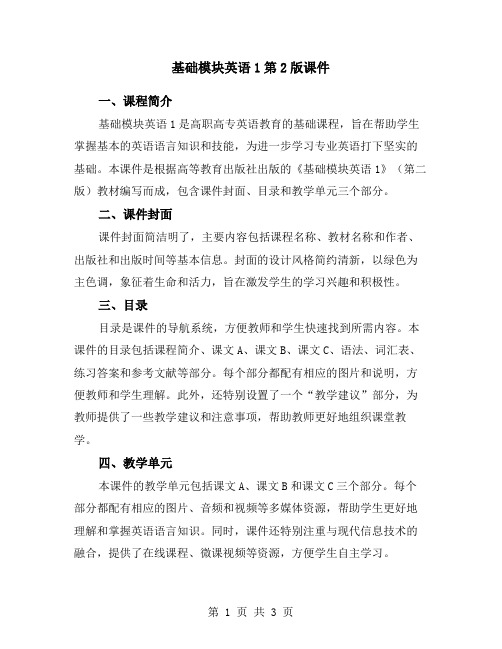
基础模块英语1第2版课件一、课程简介基础模块英语1是高职高专英语教育的基础课程,旨在帮助学生掌握基本的英语语言知识和技能,为进一步学习专业英语打下坚实的基础。
本课件是根据高等教育出版社出版的《基础模块英语1》(第二版)教材编写而成,包含课件封面、目录和教学单元三个部分。
二、课件封面课件封面简洁明了,主要内容包括课程名称、教材名称和作者、出版社和出版时间等基本信息。
封面的设计风格简约清新,以绿色为主色调,象征着生命和活力,旨在激发学生的学习兴趣和积极性。
三、目录目录是课件的导航系统,方便教师和学生快速找到所需内容。
本课件的目录包括课程简介、课文A、课文B、课文C、语法、词汇表、练习答案和参考文献等部分。
每个部分都配有相应的图片和说明,方便教师和学生理解。
此外,还特别设置了一个“教学建议”部分,为教师提供了一些教学建议和注意事项,帮助教师更好地组织课堂教学。
四、教学单元本课件的教学单元包括课文A、课文B和课文C三个部分。
每个部分都配有相应的图片、音频和视频等多媒体资源,帮助学生更好地理解和掌握英语语言知识。
同时,课件还特别注重与现代信息技术的融合,提供了在线课程、微课视频等资源,方便学生自主学习。
1. 课文A:主要介绍英语语言基础知识,包括词汇、语法、语音和听力等方面的基础知识。
本部分配有相应的练习题和答案,帮助学生巩固所学知识。
此外,还特别注重与实际应用的结合,通过例句和练习题的形式,引导学生将所学知识应用到实际生活中。
2. 课文B:以日常生活为主题,通过对话、短文等形式,介绍不同场景下的英语表达方式,帮助学生提高实际运用英语的能力。
本部分配有听力练习和口语练习等多媒体资源,帮助学生提高听力和口语水平。
此外,还特别注重与学生互动,通过小组讨论、角色扮演等形式,激发学生的学习兴趣和积极性。
3. 课文C:以职场应用为主题,介绍职场中常用的英语表达方式和技能,帮助学生为将来的职场生活做好准备。
本部分配有相应的职场情景模拟和写作练习等多媒体资源,帮助学生提高职场英语应用能力。
英语基础模块第一册电子教案(第2版)使用说明
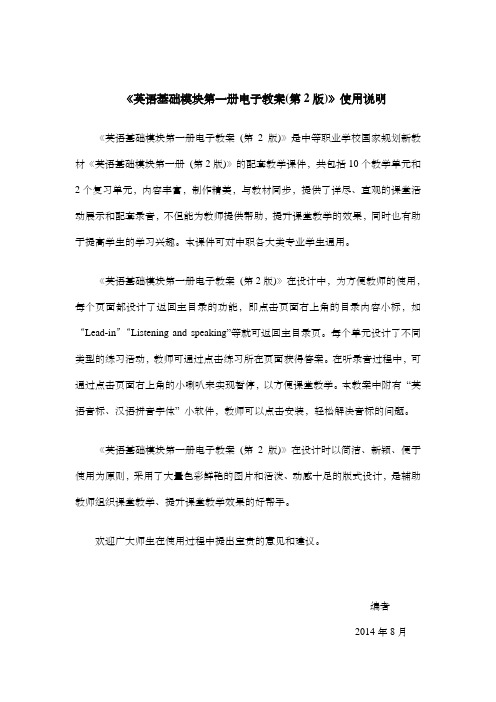
《英语基础模块第一册电子教案(第2版)》使用说明《英语基础模块第一册电子教案(第2版)》是中等职业学校国家规划新教材《英语基础模块第一册(第2版)》的配套教学课件,共包括10个教学单元和2个复习单元,内容丰富,制作精美,与教材同步,提供了详尽、直观的课堂活动展示和配套录音,不但能为教师提供帮助,提升课堂教学的效果,同时也有助于提高学生的学习兴趣。
本课件可对中职各大类专业学生通用。
《英语基础模块第一册电子教案(第2版)》在设计中,为方便教师的使用,每个页面都设计了返回主目录的功能,即点击页面右上角的目录内容小标,如“Lead-in”“Listening and speaking”等就可返回主目录页。
每个单元设计了不同类型的练习活动,教师可通过点击练习所在页面获得答案。
在听录音过程中,可通过点击页面右上角的小喇叭来实现暂停,以方便课堂教学。
本教案中附有“英语音标、汉语拼音字体”小软件,教师可以点击安装,轻松解决音标的问题。
《英语基础模块第一册电子教案(第2版)》在设计时以简洁、新颖、便于使用为原则,采用了大量色彩鲜艳的图片和活泼、动感十足的版式设计,是辅助教师组织课堂教学、提升课堂教学效果的好帮手。
欢迎广大师生在使用过程中提出宝贵的意见和建议。
编者
2014年8月。
大学英语基础模块第2版第3册Unit1-3

Language in Use
Which verbs +to do
• hope, wish • want, agree • promise, demand • ask, refuse ,choose • manage, learn • decide, pretend……
to do
Unit 1 He decided to have a big Christmas party
You are not allowed to watch TV until you finish doing your living on the moon? I enjoy reading English stories.
They agree to start next week.
Time: 6:30 PM, 24th December Place: Lotus conference room
Activities:
1) Christmas Carol competition 2) Christmas presents relay 3) stocking guessing game
8) At last, we decided _t_o_c_e__le_b__ra_t_e__ the Mid-autumn Festival
together again next year.
Unit 1 He decided to have a big Christmas party
Unit Task
2.It sounds interesting, but I prefer to stay at home.
3.I couldn’t help feeling proud of it.
高教版中职英语(基础模块 第2册)Unit 1《We laughed into tears》ppt课件4

• started to count
• start to count
• laughed into tears
• Laugh into tears
什么是一般过去时?
动词的一般过去时态表示过去发生的 动作、情况或存在的状态。
行为动词(即实义动词)的过去式没有人称 和数的变化。
所有时态都是通过
动词
变化来表现的
写出下列动词的过去式
1. look
2. live
3. stop 4. go
5. hope
6. trip 7. call 8. eat 9. want 10. are
looked lived stopped went hoped
tripped called ate wanted
were
11. do 12. have 13. do 14.get 15. come 16. say 17.see 18. put 19. read 20.take
他们今天在中国。 They ____ in Chinaaretoday.
他们昨天在日本。 They ____ in Japwaenreyesterday.
am/ is are
was were
每天,早餐我吃鸡蛋和牛奶。 I _h__a_veeggs and milk for breakfast every morning.
did has did got came said
saw put
read took
21.buy 22.sing 23.hear 24.make 25. find 26.break 27.think 28.fall 29.write 30.be
bought sang heard made found broke thought
中职英语基础模块一Unit2完整教案 (2)
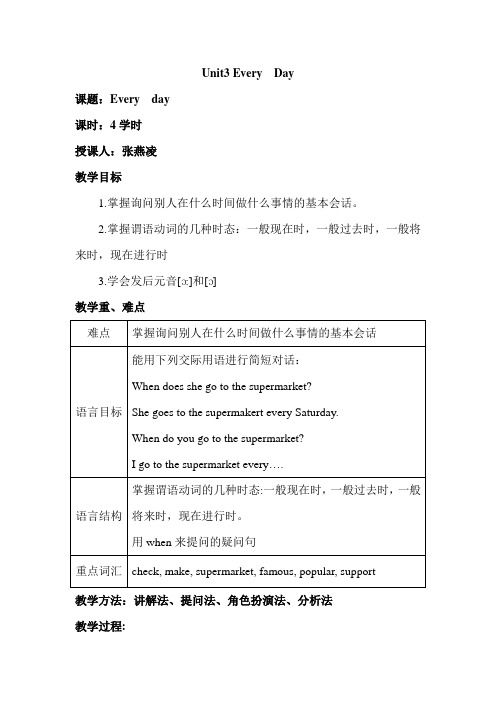
Unit3 Every Day课题:Every day课时:4学时授课人:张燕凌教学目标1.掌握询问别人在什么时间做什么事情的基本会话。
2.掌握谓语动词的几种时态:一般现在时,一般过去时,一般将来时,现在进行时3.学会发后元音[ɔ:]和[ɔ]教学重、难点教学方法:讲解法、提问法、角色扮演法、分析法教学过程:角色扮演(ROLE PLAY)1.明确口语活动的任务,要求学生仔细阅读图片。
必要时可做简单的对话示范。
2.成对活动,轮流作SpeakerA和SpeakerB。
3.学生教师巡视全班,聆听学生对话,并解答学生提出的问题。
4.挑出几个学生在班上表演。
5.总结学生的表现,必要时纠正学生中带普遍性的错误。
6.在黑板上写上January,Sunday,today,tomorrow,在每一个单词的第一个字母下面划线并指出一年中的月份和一星期中的每一天的单词首字母都要大写,而表示别的时间的单词不用大写。
语法:按照本单元中GRAMMAR的内容讲解一般过去时的方法。
此外还可以参照以下内容进行更细致的讲解。
一般过去时表示:(1) 过去某个特定时间发生,并且一下子就完成了的动作(即:非持续性动作),也可以表示(2) 过去习惯性的动作。
一般过去时不强调动作对现在的影响,只说明过去。
(1) I had a word with Julia this morning. 今天早晨,我跟朱丽亚说了几句话。
(2) He smoked many cigarettes a day until he gave up. 他没有戒烟的那阵子,烟抽得可凶了。
一般过去时常与表示过去的时间状语或从句连用,如:yesterday,last week,in 1993,at that time,once,during the war,before,a few days ago,when 等等。
句子中谓语动词是用一般过去时还是用现在完成时,取决于动作是否对现在有影响。
高教版中职英语(基础模块第2册)Unit1《Welaughedintotears》word教案
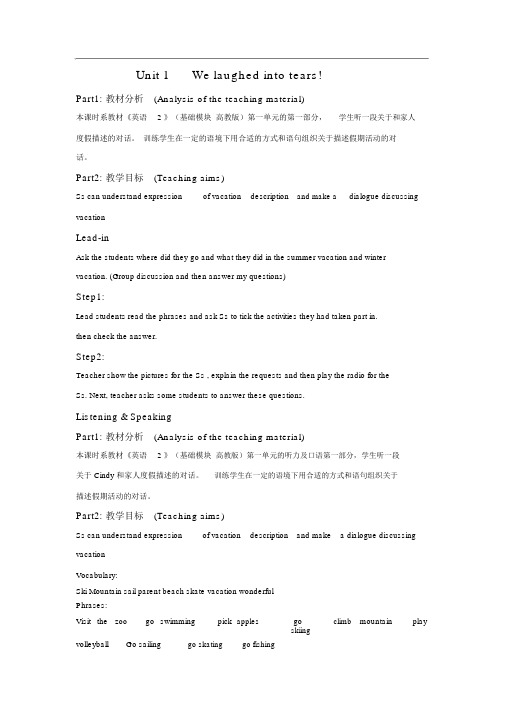
Unit 1We laughed into tears!Part1: 教材分析(Analysis of the teaching material)本课时系教材《英语 2 》(基础模块高教版)第一单元的第一部分,学生听一段关于和家人度假描述的对话。
训练学生在一定的语境下用合适的方式和语句组织关于描述假期活动的对话。
Part2: 教学目标(Teaching aims)Ss can understand expression of vacation description and make a dialogue discussing vacationLead-inAsk the students where did they go and what they did in the summer vacation and winter vacation. (Group discussion and then answer my questions)Step1:Lead students read the phrases and ask Ss to tick the activities they had taken part in.then check the answer.Step2:Teacher show the pictures for the Ss , explain the requests and then play the radio for theSs. Next, teacher asks some students to answer these questions.Listening & SpeakingPart1: 教材分析(Analysis of the teaching material)本课时系教材《英语 2 》(基础模块高教版)第一单元的听力及口语第一部分,学生听一段关于 Cindy 和家人度假描述的对话。
- 1、下载文档前请自行甄别文档内容的完整性,平台不提供额外的编辑、内容补充、找答案等附加服务。
- 2、"仅部分预览"的文档,不可在线预览部分如存在完整性等问题,可反馈申请退款(可完整预览的文档不适用该条件!)。
- 3、如文档侵犯您的权益,请联系客服反馈,我们会尽快为您处理(人工客服工作时间:9:00-18:30)。
I Grammar focus You He / She / It
I You He / She / It Can We You …?
We
You They
can / can’t …
They
I You He / She / It Yes, can No,
I you he / She / It Can’t
speak Chinese teach English drive a car read in Chinese repair computers serve customers
serve customers. I can ______________________
1. Look and complete.
speak Chinese teach English drive a car read in Chinese repair computers serve customers
repair computers. I can ______________________
1. Look and complete.
Objective Sales Manager Abilities I can use the computer. I can speak English. I can read and write in English. …
( (
) a. His name’s Wang Tong. ) c. He can speak English.
5. Listen and complete.
Name: From:
Zhang Qing Qingdao 28
Age:
……
6. Listen, read and underline.
Bill: Good morning, sir! Mr Zhang: Good morning! Your name, please? Bill: I’m Bill Brown. Mr Zhang: Can you say something about yourself? Bill: Well, I’m from Britain. I teach English there. Mr Zhang: That’s good! Can you speak Chinese? Bill: Yeah, I can speak a little Chinese. Mr Zhang: How old are you?
We
You They
we
you they
13. Look and complete.
can run 1. I ______________________ .
13. Look and complete.
can swim 2. He _____________________ .
13. Look and complete.
11. Read and answer.
Name Age Address
Wang Tong 23 No. 28 Tongfang Street, Tianjin
Gender
Male
Phone Number 022-8466-2027 E-mail Address wtong2009@
B: I’m …
B: Yes, I can. / No, I can’t.
Name Wang Tong Li Jing
Age 23 24
Can Drive a car. Use the computer. Speak English. Write in English.
Can’t Speak English. Drive a car.
speak Chinese teach English drive a car read in Chinese repair computers serve customers
read in Chinese. I can ______________________
1. Look and complete.
May I have your name, please? Your name, please? Where are you from?
能告诉我你的名字吗? 请告诉我你的名字。 你从哪儿来?
I’m from ...
我来自⋯
9. Think and tick.
( ( ( (
) name ) age ) ability ) family
B:
A: B:
A:
B: A:
B:
A: B:
A:
8. Tick, talk and decide. Name Age .
• can use the computer • can repair the computer • can speak English • can read in English • can drive a car • can serve customers
( ( ( (
) phone number ) e-mail ) address ) parents
10. Read and circle.
( ( ( (
) name ) age ) ability ) family
( ( ( (
) phone number ) e-mail ) address ) parents
speak Chinese teach English drive a car read in Chinese repair computers serve customers
teach English. I can ______________________
1. Look and complete.
( (
) b. He wants to be a sales manager. ) d. He can’t read in English.
11. Read and answer.
Name Age Address
Sally Smith 25 No. 4 Hexi Street, Tianjin
Gender
12. Compare and choose.
... can get the job because ... can ...
_______________________________________
_______________________________________
_______________________________________ ____________________________ ____________________________ ____________________________ ____________________________
speak Chinese teach English drive a car read in Chinese repair computers serve customers
a car. I can drive ______________________
2. Listen and tick.
I can speak Chinese.
can read in English 3. She ____________________ .
13. Look and complete.
can sing 4. We ____________________ .
13. Look and complete.
can speak English 5. They ____________________ .
1. Look and complete.
speak Chinese teach English drive a car read in Chinese repair computers serve customers
I can speak Chinese.
1. Look and complete.
A:
B: A:
Good morning. Good morning! What’s your name? (Your name, please?) I’m Wang Tong. How old are you ? (What’s your age?) I’m 23. Can you speak English? Sorry, I can’t. Can you drive a car? Yeah, I can drive a car. Can you use the computer? Sure, I can. OK. That’s it. Thank you. Thanks.
I can read in Chinese.
I can serve customers.
I can repair computers.
I can teach English.
I can drive cars.
3. Read and tick. Dialogue
( ( ( ( ( (
) a. I can drive a car. ) b. I can swim. ) c. I can use the computer. ) d. I can play basketball. ) e. I can serve visitors. ) f. I can speak English.
13. Look and complete.
can fly 6. It _________ guess.
Bill: I’m 27.
Mr Zhang: OK. That’s it. Thank you. Bill: Thanks.
